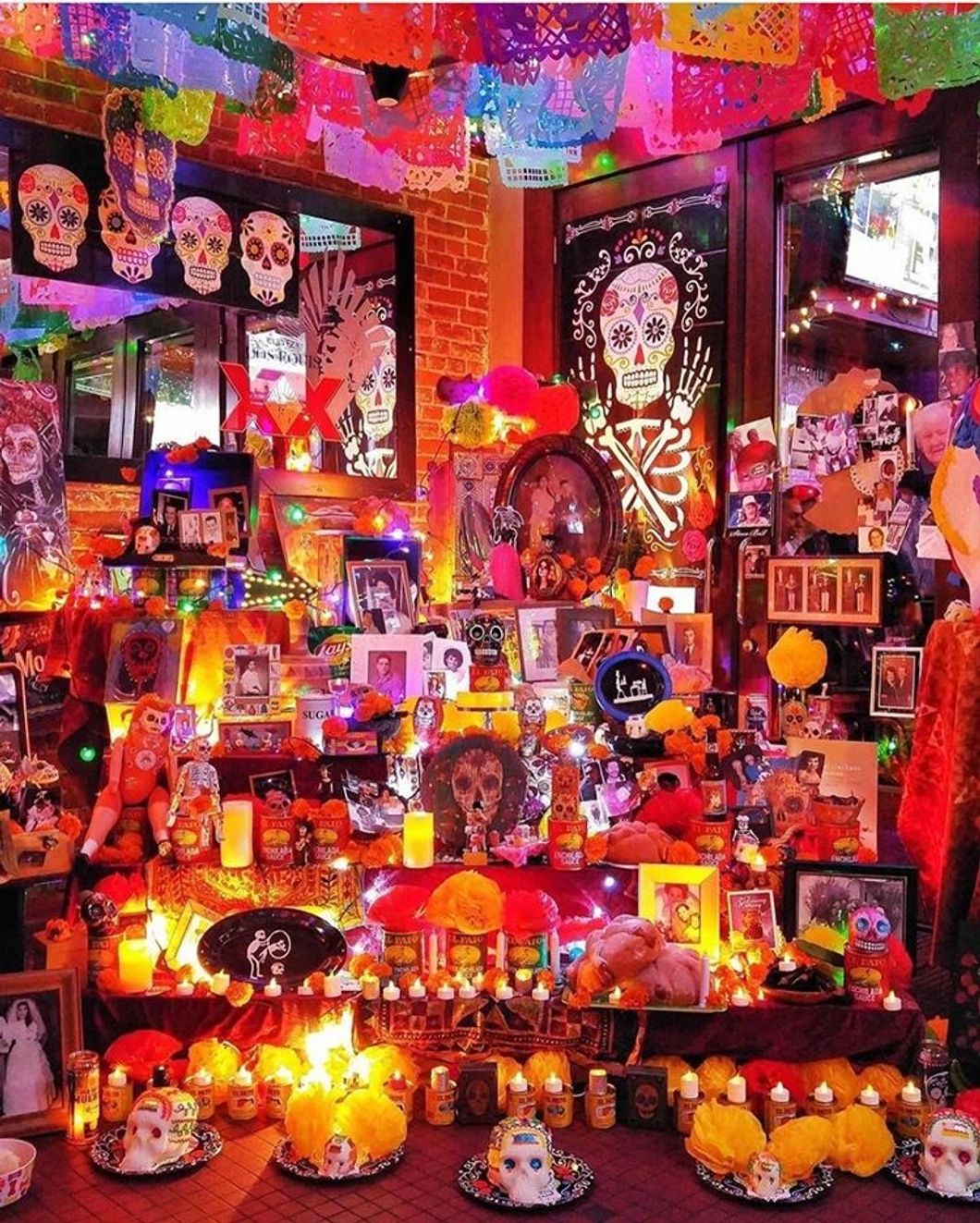Hello, friends! It is that time of year again! My favorite holiday second only to Christmas is right around the corner, Día de Muertos. Day of the Dead, as it is known here in the states, is a beautiful holiday originally celebrated in Mexico. The belief is that over the course of November 1 and 2, the dead are able to return to the land of the living and visit their loved ones.
This semester, I'm taking probably one of the coolest courses I've taken in college, a philosophy course called "Confronting Death." We talk a lot about what we think happens when we die and how to accept death, which kind of confused me at the beginning of the class. The more we talked, the more I realized that so many of my classmates were scared of dying, scared of not knowing what was next.
Growing up the way I did, that was never a fear. I grew up very Mexican and very Catholic, so it was drilled into me that when I died I would go to Heaven, and on Día de Muertos, I could come back and visit. Celebrating the holiday always gave me a sense of peace and made me feel connected with a family living in another country.
Traditionally, it's a Mexican holiday, but personally I think that Día de Muertos is so beautiful everyone deserves to celebrate. So, laden with the expertise of my mom and my grandma, here is how you can celebrate Día de Muertos at home, Mexican or not.
First, let's talk about the ofrenda (altar). Día de Muertos is one of those cool things that combines old world spiritualism and new world religion, namely Catholicism. The ofrenda is built in your home, and all the bright colors, candles, marigolds, and food serve to guide your ancestors safely from the land of the dead back home for the night. So, here's what you need to build one.
1. Your ofrenda needs three levels
These levels symbolize the underworld, Earth, and heaven. You could go all out with this, but if you're in a tiny college dorm like me, two different sized boxes atop your desk will do just fine. The ancestors are not picky. Traditionally, purple tablecloths are used to symbolize mourning, but again, if you're on a budget and all you have is bright yellow tablecloths left over from your birthday (thanks, mama), that will do just fine.
2. The bottom level: the graveyard
So normally, the bottom level is on the floor and made to symbolize a graveyard (but normally these ofrendas take up a whole room and I'm working with a total of a tiny desk, so bare with me here). Back home, my mom also avoids putting things directly on the floor because there are always little feet ready to stomp. Instead, my mom makes a cross out of salt on the lowest level, she places tea lights in front of the cross, and we string tissue paper marigolds (the flower of the dead) on the edge of the table. Efficient.
3. The middle level: food!
On my tiny dorm ofrenda, the bottom and middle level are the same desk, but that is okay. The middle level represents Earth, so here is where you'll put all your offerings. In my house, it's where we normally put our family members' favorite foods or drawings my siblings made for them. Always put a glass of water or something to drink because your ancestors will be thirsty by the time they get there. This middle level is also where we put all the sweets like pan de muerto and the decorated sugar skulls. And the food you put doesn't have to be Mexican, just whatever is the favorite of your loved ones.
4. The top level: Heaven
Here's the Catholic bit. My top level always includes a stylized icon of La Virgen de Guadalupe given to me by an aunt. It's perfect because Our Lady is in a little archway (That's also important for reasons I don't really remember, but usually there's an archway of marigolds atop the ofrenda). In addition to the icon, I've got some velas (candles) of Saint Jude and of Our Lady (Mexicans are big fans of Our Lady), and some more flowers.
5. The photos
Ever seen Coco? Last but certainly not least, put a few pictures up of your deceased. That way they know the altar is for them. And you're not limited to just family members. Anybody that was important to you who passed away, feel free to put their pictures up. While I'm waiting for my family pictures to come back from CVS, currently the only photo I have up is of Ruth Bader Ginsberg. (She's right next to Our Lady.)
In Mexico, death isn't seen as something scary. It's a celebration of life and of the afterlife. Honestly, I think the main reason I can't understand my classmates' fear of death is because I've always seen death as a beautiful thing. And a celebration like Día de Muertos proves that death doesn't stop anything; it can't stop love and it can't stop family.
So if you choose to make an ofrenda this year (which you totally should), I hope you have the best time remembering your loved ones and that you know they are always with you.



















